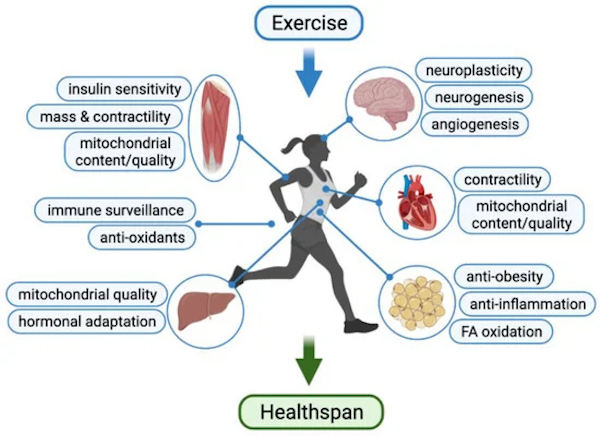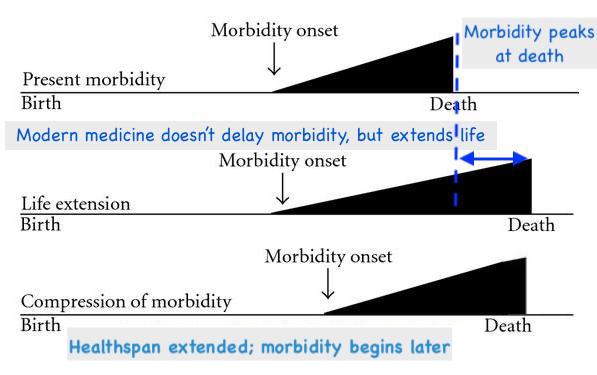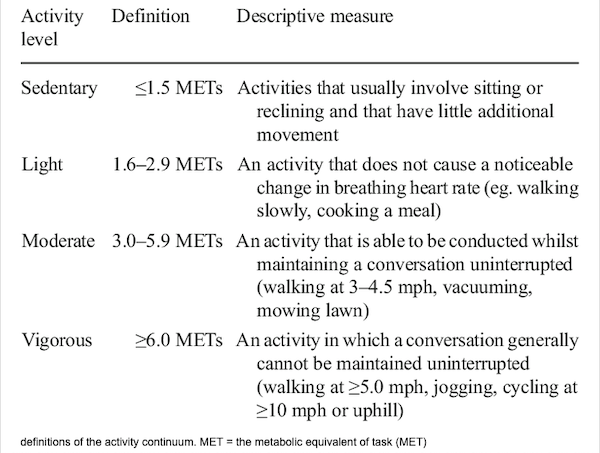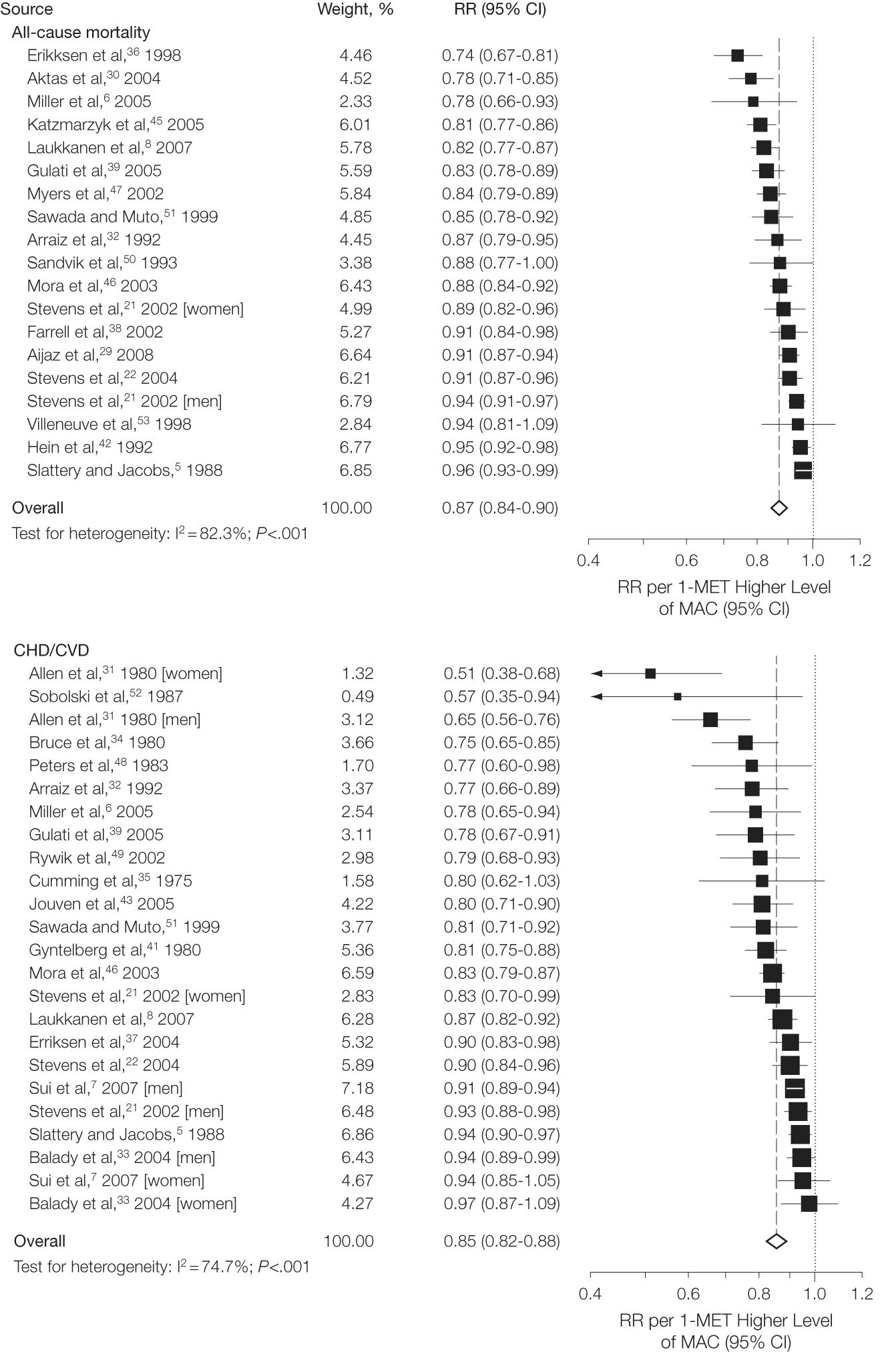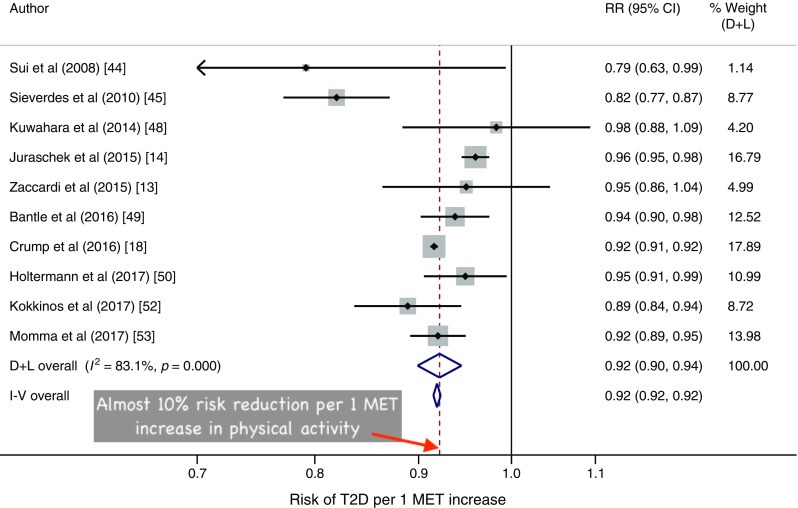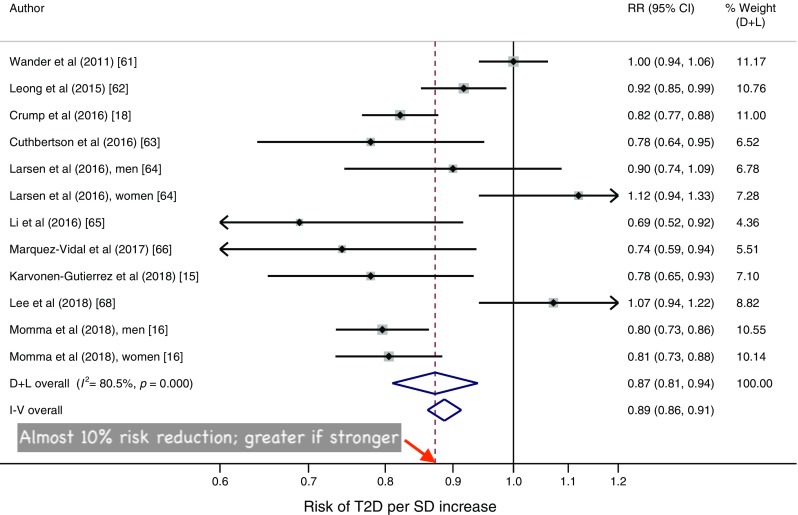Exercise: Powerful Medicine for Health and Aging with Dr. Stuart Phillips

Would you take a pill that could help you avoid most chronic diseases, make you fit and extend your healthspan? Well, it’s not a pill, but there is something you can do that will achieve the same results!
Canadian kinesiologist Dr. Stuart Phillips wants to dispel an aging myth, which goes something like this:
Aging is an immutable characteristic set in our genes, and there’s nothing we can do about it.
Studies done on twin pairs show that variability in life for longevity between twin pairs was on average 15 years. This means that even though they’re genetically identical, various lifestyle factors are so impactful that have a substantial impact on mortality.
Thus, there are highly mutable characteristics to longevity that depend, not on your genes, but on the things that you do with your life, which is the essence of the science of epigenetics (“above” genes).
Cancer is the leading cause of mortality in Canada (it’s heart disease in the USA), but typically, people form industrialized countries die from an assortment of preventable, chronic, typically lifestyle-influenced diseases.
They don’t have to, and you don’t have to.
As the title of this post suggests, all you need to do is get into the habit of doing physical exercise.
Here’s what I cover in this post:
- Exercise compresses morbidity
- Canada’s 24-hour movement guidelines (video)
- Effects of Cardio Fitness and and Strength Training on heart disease
- Effects of Cardio Fitness and and Strength Training on cancer
- Effects of Cardio Fitness and and Strength Training on type 2 diabetes
Let’s dig in…
Exercise Compresses Morbidity
What if you could avoid dying from one of those chronic diseases?
You can, and it begins with what the World Health Organization (WHO) refers to as “Active Aging”, or “Successful Aging”:
Active aging is the process of optimizing opportunities for health, participation and security in order to enhance quality of life as people age.
When this happens, you have compressed morbidity.
Morbidity is the condition of suffering from a disease or medical condition. It is associated with a reduction in quality of life that occurs when people have disease. You can see in the illustration below
Compressed Morbidity Extends Healthspan
The illustration above shows that modern medicine has added 30 plus years to our lifespan, but that has just lengthened the years over which morbidity is experienced (first two graphs), and so the quality of life has not improved. The third graph shows “compressed morbidity”, wherein lifespan has not changed, but the years experienced in poor health began later in life and has been compressed.
You can think of aging as a continuous process of physical and cognitive degradation. Since we currently can not stop or reverse the aging process, the focus needs to be on slowing down the process of degradation so that we can extend the years over which we’re healthy. This is optimal longevity.
Professor Frank Booth, professor at the University of Missouri, opined: What if there were a treatment that would lower the risk for all known chronic diseases; one that would work regardless of age, sex, race or pre-existing conditions; one that would save the health care system billions of dollars, cost comparatively little in return, and the side effect profile includes better prognoses for a variety of unrelated ailments, including depression dementia and even suicide incidents?
He goes on to say:
It exists and it’s called physical activity!
Physical activity is any movement of the body by skeletal muscles (muscles that move the body) that results in energy being expended, such as going for a walk, gardening, brushing your teeth, etc.
I would call this type of physical activity necessary but not sufficient to move the healthspan needle, with the exception of walking, if the pace and duration elevates your pulse.
What’s needed to improve healthspan is physical activity that is planned, structured and repetitive, with the aim of improving or maintaining physical fitness.
Next up is a video presentation by Dr. Phillips entitled Exercise: Powerful Medicine for Health and Aging.
Canada’s 24-hour Movement Guidelines
To guide you in this endeavor, Dr. Phillips, a Canadian, touts Canada’s unique 24-hour movement guidelines; “there is no other country that has a movement guideline that encompasses all 24 hours in the day”, he says.
Check out Dr. Phillips video, the contents of which I review below if you’re short on time or rather read:
Learn the answers to the following questions:
- 0:00 What do you want your last 10 years of life to look like?
- 6:24 What is active or successful aging?
- 11:43 What are the Canadian 24-hour Movement Guidelines, and why do they matter?
- 24:25 What about strength training?
- 35:10 What should you do to age well?
- 42:05 Is there such a thing as too much exercise?
- 44:50 What is the role of stretching and balance exercises?
- 47:15 What about getting 10,000 steps per day?
- 49:11 Is it ever too late to start exercising again?
- 50:30 Can age-related muscle loss be reversed?
- 52:01 Does the type of exercise you do make a difference?
- 54:50 What are the recommendations for those with specific health conditions or mobility issues?
Canada’s daily movement guidelines are focused on:
- More movement,
- Less sedentary time, and
- Sleeping well.
These are the activity guidelines supported by Canada, the US, the WHO:
- 10,000 steps per day
- 150 minutes per week of moderate to vigorous activity, 30 minutes per session
- Resistance training (weightlifting and/or calisthenics) twice per week
- Stand more, sit less (8 hours or less)
Canadian 24-Hour Movement Guidelines for Adults: An Integration of Physical Activity, Sedentary Behaviour, and Sleep
| Physical activity
|
Performing a variety of types and intensities of physical activity, which includes:
Several hours of light physical activities, including standing |
| Sedentary behavior
|
Limiting sedentary time to 8 hours or less, which includes:
|
| Sleep
|
Getting 7 to 9 hours of good-quality sleep on a regular basis, with consistent bed and wake-up times. |
Same as above, except:
The graph below shows what can be expected by following these guidelines. It shows
Dose Response of Physical Activity
“Leisure time physical activity” as measured by MET (Metabolic Equivalent of Task), and its association with mortality, here called “Hazard Ratio of Mortality”, mortality referring to death, and hazard referring to relative risk of no physical activity (“1” on the graph) and 30 METs of physical activity.
MET is the ratio of the rate at which a person expends energy, relative to the mass of that person, while performing some specific physical activity compared to a reference. Learn more about it in my post, How To Reduce Obesity In Older Adults and Improve VO2 Max.
As the first graph (A) above indicates, for every incremental part of physical activity done in a given week, the hazard is reduced down to around 0.6, or about a 40% reduction in a the hazard of mortality in a given period of time.
The second graph (B) provides an inverse look by measuring the association of “Years of life gained” to physical activity measured by METs. And in this case (not shown in B, but at timestamp 14:48 in the video), 150 minutes per week of moderate to vigorous activity plus two days of resistance training results in an extra three to four years of life.
Imagine if some pill could yield such results! Wouldn’t you want to take it?
OK, so such a pill does not exist, so let’s breakdown what this 150 minutes and two days of resistance training is all about.
Effects of Cardio Fitness and Strength Training on Heart Disease
If you want to do all your aerobic/anaerobic exercise in five days, 150 minutes breaks down to five 30-minute sessions to achieve sufficient cardiorespiratory fitness to appreciably extend healthspan.
Cardiorespiratroy fitness integrates measures from the neural level to the cardiovascular level to the respiratory level to the neurological level to the skeletal muscle to the bone, etc., says Dr. Phillips; therefore, any weak link along that chain is going to compromise your cardiovascular fitness.
Low levels of cardiorespiratory fitness are associated with high rates of all-cause mortality and mortality from established risk factors, such as smoking, high blood pressure, high cholesterol and type 2 diabetes.
Those with high levels of cardiorespiratory fitness have a lower risk of heart disease and a higher probability to live longer and free from cardiovascular disease, but also a lower risk from all-cause mortality, as these next two graphs shows from a meta-analysis entitled, Cardiorespiratory Fitness as a Quantitative Predictor of All-Cause Mortality and Cardiovascular Events in Healthy Men and Women.
These are called “forest plots”, and here list the findings of an analysis of many studies that all indicate that the “Risk Ratio” (RR) of “All-cause mortality” or “CHD/CVD” (coronary heart disease/cardiovascular disease) is less than 1.0, meaning that the risk of dying or having some cardiovascular disease is lower (about a 15 to 17 percent reduction) for those who engage in physical activity relative to those who do not.
Meta-analysis of All-Cause Mortality and CHD/CVD per 1-MET Higher Level of Maximal Aerobic Capacity
Effects of Cardio Fitness and Strength Training on Cancer
You probably don’t equate exercise as a method to reduce your risk of cancer, but studies on the matter assert that it does. The beneficial effects of exercise are wide-ranging — they’re not limited to the health of your heart or lungs.
When researchers pooled data from 12 studies with a cumulative cohort of 1.44 million participants, and examined their physical activity relative to their risk of 26 of the most common types of cancer in a large cohort of individuals, they found that:
… higher levels of leisure-time physical activity (at the 90th percentile), as compared with lower levels (at the 10th percentile), were associated with lower risk of 13 of 26 types of cancer examined, with risk reductions of 20% or more for 7 of the cancers. Leisure-time physical activity was also associated with higher risk of malignant melanoma, and higher risk of nonadvanced prostate cancer. A higher level of leisure-time physical activity was associated with a 7% lower risk of total cancer.
Looking at the forest plot below, anybody that sits to the left of the vertical line in terms of their Hazard ratio is experiencing statistically significant lower levels of cancer than people who have relatively low levels of physical activity, which covers the first 17 types of cancer listed. Number 18 is thyroid, and it and all those below it have decreasing statistical significance.
You can see at the bottom that malignant melanoma was not shown to be favorably impacted by physical activity at all, and in fact shows an increased risk associated with physical exercise. The reason for that is straightforward — such activity is often done outside under sun exposure. Wear sunscreen.
Summary Multivariable Hazard Ratios for a Higher (90th Percentile) vs Lower (10th Percentile) Level of Leisure-Time Physical Activity by Cancer Type
Effects of Cardio Fitness and Strength Training on Diabetes
Type 2 diabetes represents approximately 90% of all diabetes cases. In the U.S. about 37 million Americans have diabetes. In Canada, about 11.7 million people either have type 2 diabetes or are prediabetic, and according to Dr. Phillips, about half of them don’t know they have the disease. It doesn’t get much better elsewhere among industrialized nations, the people of whom tend to eat a lot of processed food, and are sedentary.
Type 2 diabetes is the leading cause of adult blindness; it’s the leading cause of adult below-the-knee amputations; and it’s a disease with a very high morbidity profile. But, yet again, this debilitating disease can be prevented or be less debilitating if you’re more fit.
Let’s look at two forest plots of a analysis of a bunch of studies summarized in a paper entitled, Cardiorespiratory fitness, muscular strength and risk of type 2 diabetes: a systematic review and meta-analysis.
This first one shows the results of each study evaluated. That red vertical dotted line indicates a nearly 10% risk reduction in getting type 2 diabetes for each 1 MET increase in cardiorespiratory activity.
Being strong helps as well.
This next forest plot indicates, again, almost a 10% risk reduction of type 2 diabetes if you’re stronger than those who do not participate in resistance training.
Obviously, the combination of cardiorespiratory training (think aerobics plus some anaerobic) plus strength training is ideal for reducing your risk of getting an all-too-common disease, type 2 diabetes.
This meta study concludes:
… our systematic review and meta-analyses provide evidence that higher cardiorespiratory fitness and muscular strength are associated with lower risk of type 2 diabetes. The cardiorespiratory fitness association was linear throughout low to high fitness levels. Physical activities that enhance cardiorespiratory fitness and/or muscular strength should be promoted to decrease risk of type 2 diabetes in individuals and populations.
So far, we took a look at how physical activity can make a big difference in reducing your risk for getting heart disease, cancer and type 2 diabetes, but what about dementia (including Alzheimer’s), sarcopenia (muscle wasting) and osteoporosis?
Your risk of getting all of these unwanted health conditions are reduced by physical exercise, which Dr. Phillips details beginning at time stamp 20:16. (Yes, I’m trying to incentivize you to watch the video up there.)
The bottom line you already know — if you want to extend your healthspan by side-stepping some of the most pernicious diseases of our time, exercise — get your heart racing and your muscles pumping.
Here are some resources to guide you, courtesy of McMaster University. Do yourself a favor and check them out.
Last Updated on February 26, 2023 by Joe Garma

